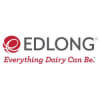Paul Shapiro lives in California and is the author of "Clean Meat: How Growing Meat Without Animals Will Revolutionize Dinner and the World." He tweets from @PaulHShapiro.
Imagine train car after train car, all en route to a medical factory, filled with nothing but pig and cattle pancreases.
As tough as it is to imagine today, just four decades ago, that’s how we made insulin for diabetics. At the time, it took some 23,500 farm animal pancreases simply to produce a single pound of insulin, meaning that pharma giant Eli Lilly purchased the pancreases of 53 million animals each year.
Thankfully, diabetics no longer need to inject themselves with parts of pig pancreases. Instead, they have access to a safer and more reliable therapy: actual human insulin. No, they’re not relying on cadavers. Instead, they can thank the scientists at a then-start-up called Genetech, which figured out how to engineer bacteria to make human insulin on their own.
Today, a group of promising start-ups is further refining this process and taking it out of the medical space, using it to produce everything from egg whites and milk to leather and gelatin, all without the animals. In fact, this technology isn’t really new: the same microbial fermentation process has been used for decades to produce the rennet that makes cheese curdle. In the past, cheesemakers relied on huge numbers of calf intestinal linings for the substance.

Known as acellular agriculture, companies like the Bay Area’s Clara Foods have figured out how to get yeast microbes to produce actual egg proteins. And you might not have realized it, but you already have an idea of how it works. When you feed sugar to baker’s yeast, the yeast produces CO2 to make the bread rise. When you feed sugar to brewer’s yeast, it produces alcohol. Well, these entrepreneurs have engineered a yeast that produces, in this case, actual egg proteins. After removing the yeast from the protein it created, what’s left isn’t an egg alternative. It’s actual egg white proteins, but without the chicken. Other companies, like Geltor and Perfect Day, are doing the same with gelatin and cow’s milk, and both are doing it animal-free.
“More than anything, we want to provide an alternative to people who want to consume products that align with their values, their environmental conscience, and, ultimately, products that are a good source of protein without all the baggage,” Clara Foods CEO Arturo Elizondo told me.
Just what type of baggage? Think about what it takes to produce an egg. You need a chick, and the whole system in place to produce those chicks. Then you need to feed and house her for four months before she even starts laying eggs. You need lighting, climate control, feed, water, supplements, medications, labor and much more. Even once she starts laying, she’s only laying on average one egg per day.
With fermentation, there are still resources needed, but such precision agricultural techniques could pump out a constant flow of liquid egg whites for consumers with a small fraction of in the inputs its competitors in the egg industry need.
As humanity’s footprint on the planet gets bigger, we’ll need to find ways to more sustainably produce the protein so many humans want to eat. The typical methods by which we produce animal protein today are taxing on the environment, cruel to animals, and pose serious public health risks. Acellular agriculture may seem futuristic, but with a decades-long track record of safe use in both the medical and food space, its new applications could just allow us to have our eggs and eat them too.
It’s easy for us to shake our heads our heads at the thought of trains carrying millions of pig pancreases to supply diabetics with insulin. Will we one day soon feel similar astonishment at the thought of factory farms that confine millions to chickens simply to provide us with protein? With the advances acellular ag start-ups are now making, such a day doesn’t seem hard to envision.












